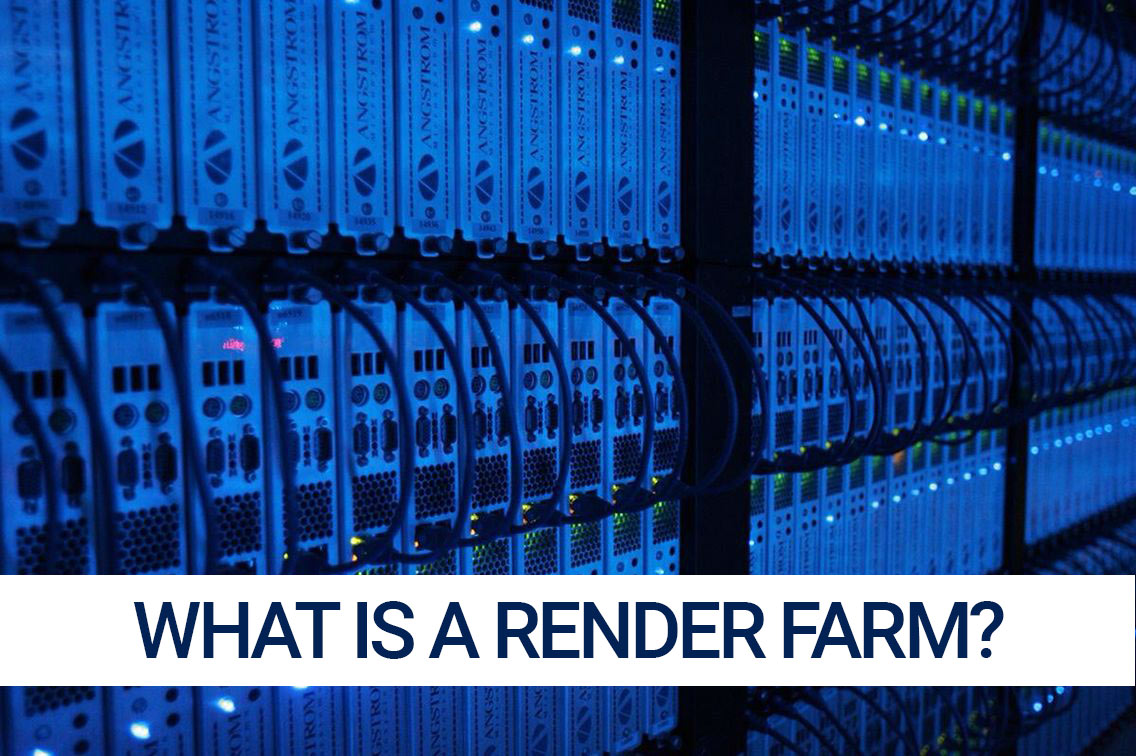We all know what a farm is. It is a place for growing crops or raising livestock in large numbers. However, in the 3D world, artists are more familiar with the term “render farm”. But not all understand “what is a render farm”, and how it works.
In this post, Chip Render will explain everything you need to know about render farms and the criteria for selecting one.
Origin of the term “render farm”
The word “render farm” is said to have originated as a joke in 1990 and later became an official term. In July 1990, Autodesk produced a short animation “The Bored Room” animated in Autodesk 3D Studio (now 3ds Max).
To meet an unrealistic deadline, the production team used a room filled with Compaq 386 computers to perform the rendering. At that time, the computers were not networked. So each computer was configured manually to render a specific image sequence.
Jamie Clay, the Autodesk technician, was in charge of collecting rendered images and managing the computers. He also had a habit of wearing farm overalls. Because of that, Bob Bennett, the software product manager, joked that Clay was farming the frames.
The term “render farm” was created and has been used since then.
What is a render farm?
From its origin, we can simply understand a render farm as a farm of computers for rendering workloads.
But to explain more technically,
A render farm is a huge collection of computers networked together to render 3D images and animations. Artists mainly use render farms to create CGI and visual effects for films, television, architecture, game development, and more.

How does a render farm work?
A typical render farm consists of many computers – one render manager for controlling and many render nodes for rendering. A large render farm can have up to thousands of render nodes.
The render manager is a computer that has installed a render management application such as Thinkbox Deadline. It manages the rendering jobs by taking the scene and distributing it among render nodes. More importantly, the render manager tells the render nodes what to do. For example, it assigns each render node to render an individual frame or a different frame range.
On the other hand, render nodes are computers that listen and perform tasks from the render manager. Each render node has installed all 3D software, render engines, and plugins needed. After receiving orders, it processes the task assigned and sends the result back to the render manager.
Let’s do a math.
Let’s say you have a 2-minute animation. A second needs at least 24 frames for the motion to be natural in human eyes. That means a 2-minute animation has 2880 single frames. If your scene is simple and one frame only takes 10 seconds to render, it will still take you 8 hours on your computer. Besides, the system will work at full capacity during those 8 hours. Also, you can’t do anything else, even play Terris or watch Netflix. All you can do is wait for the render to finish.
But if you send your scene to a render farm, 10 nodes will render your scene in 48 minutes, and 100 nodes will render your scene in just 4.8 minutes.
Can you imagine how much time you have saved?
Types of render farm
There are several types of render farms.
According to the provider: Your own vs cloud render farm
- Your own render farm can be also called a self-built/local render farm.
- Cloud render farm is also known as an online/commercial render farm.
According to the computing model:
- IaaS vs SaaS vs PaaS render farm.
According to the hardware:
- CPU vs GPU render farm.
Other than render farm, you may also come across other terms for cloud rendering services such as:
- Distributed render farm.
- Server Rental.
- Cloud Workstation, Cloud Desktop, Cloud PC.
Advantages of using a render farm
Some may still wonder if is it worth using a cloud render farm. Well, take a look at a variety of advantages of it.
Save time
The first and foremost advantage of using a render farm is saving your time. A render farm usually splits your project into smaller tasks and renders them simultaneously on multiple render nodes. The renders that can eat up hours or days (or longer) of your time can now be completed in just minutes or hours.
Save cost
On most cloud render farms such as Chip Render, you only pay for the rendering power that you use. Therefore, many artists and studios can just use render farms for rendering large projects or when the deadline is near.
Moreover, building and maintaining your own render farm is expensive and requires a high level of IT expertise.
Higher quality
With the power of render farms, you can render your complex scene with high resolution in a short time. You also have more time to revise and fine-tune your final render, making it look as best as possible. That is why you can create a higher-quality image or animation to show your clients.
Scalability
A commercial render farm usually has hundreds, or thousands of render nodes. Therefore, it is very easy for you to scale up or down the processing power depending on specific projects.
Greater efficiency
By sending the projects to a render farm, you free up your computer’s resources. So you can continue to work on other projects.
Furthermore, faster rendering means faster iterations. So you can have more time for creation and earn more money.
Criteria for selecting a render farm
There are literally hundreds of render farms out there. How to select a render farm for your needs?
Well, the best way is to test every render farm you know and google. But on which criteria should you use to sort out the best (the most suitable) render farm? We have a few evaluation criteria – they are not definite but some things you should keep in mind.
- Easy to use.
- Compatible with 3D software, renderers, and plugins you are using.
- Rendering speed and available nodes.
- Price and rendering cost.
- IaaS vs SaaS.
- Stability and Support.
- Data center location.
- Reputation, and more.
 Every render farm is unique, and there are so many aspects to consider that make direct comparison difficult. There is no answer for the best render farm, only the suitable render farm. For those who need complete control over their projects, or use real-time rendering software, Chip Render Farm is an ideal choice. Furthermore, you will enjoy the best prices for powerful render nodes: 1/2/4 x GPU RTX 3090s.
Every render farm is unique, and there are so many aspects to consider that make direct comparison difficult. There is no answer for the best render farm, only the suitable render farm. For those who need complete control over their projects, or use real-time rendering software, Chip Render Farm is an ideal choice. Furthermore, you will enjoy the best prices for powerful render nodes: 1/2/4 x GPU RTX 3090s.




